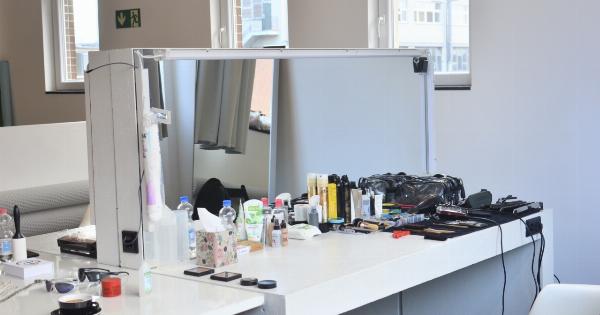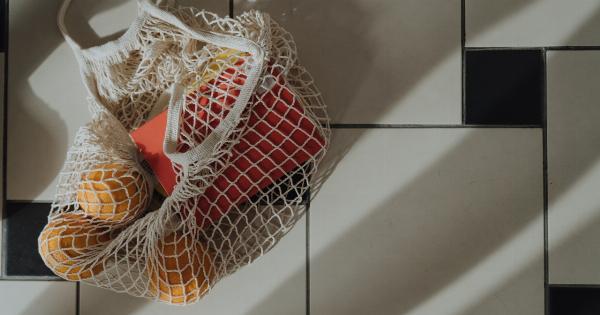Having long, healthy, and shiny hair is a desire for many. However, due to various factors such as genetics, age, hormonal changes, and environmental factors, achieving hair growth goals can sometimes feel like an uphill battle.
Luckily, there are several proven methods and strategies that can help boost hair growth. Whether you are trying to stimulate hair growth, prevent hair loss, or simply improve the overall health and appearance of your hair, these 30 hair growth tips will surely help you on your journey to luscious locks.
1. Maintain a Healthy Diet
Your hair’s health is a reflection of your overall well-being, so it’s crucial to include nutrient-rich foods in your diet that support hair growth.
Incorporate foods that are high in vitamins A, B, C, and E, as well as biotin, iron, and zinc. Examples include leafy greens, nuts and seeds, eggs, fish, and whole grains.
2. Stay Hydrated
Proper hydration is essential not only for your overall health but also for your hair. Be sure to drink sufficient water daily to keep your hair adequately moisturized and prevent dryness, brittleness, and breakage.
3. Protect Your Hair from Heat
Excessive heat styling can cause damage to your hair shaft and hinder its growth. Minimize the use of hot tools like straighteners, curling irons, and blow dryers. If using them, apply a heat protectant spray to minimize potential damage.
4. Regular Trimming
Although it may seem counterintuitive, regular trims help promote hair growth. Trimming your hair every 6-8 weeks prevents split ends from moving up the hair shaft, reducing breakage and allowing your hair to grow longer and healthier.
5. Be Gentle when Brushing
Always use a wide-toothed comb or a brush with soft bristles when detangling or styling your hair. Avoid aggressive brushing, as it can lead to hair breakage and damage to the hair cuticle.
6. Scalp Massage
Massaging your scalp increases blood circulation to the hair follicles, stimulating hair growth. Use your fingertips to gently massage your scalp for a few minutes daily, or invest in a scalp massager to make the process easier and more effective.
7. Avoid Tight Hairstyles
Avoid hairstyles that exert excessive tension on your hair, such as tight ponytails, braids, or buns. These styles can lead to hair breakage and traction alopecia, a condition characterized by hair loss caused by excessive pulling.
8. Use a Silk Pillowcase
Switching to a silk pillowcase reduces friction between your hair and the pillow, minimizing hair breakage and tangles. Additionally, silk pillowcases help retain moisture in your hair, preventing dryness and frizz.
9. Protect Your Hair from the Sun
Overexposure to the sun’s UV rays can damage your hair and impede its growth. Whenever you’ll be spending extended periods outdoors, protect your hair by wearing a hat, scarf, or using a UV protection spray.
10. Avoid Overwashing
Washing your hair too frequently can strip away its natural oils, leading to dryness and potential breakage. Aim to wash your hair no more than two to three times per week, using a gentle shampoo and conditioner.
11. Use Hair Masks
Applying a nourishing hair mask once a week can provide intense hydration and nutrition to your hair, promoting its growth and overall health. Look for masks containing ingredients like coconut oil, argan oil, shea butter, or aloe vera.
12. Don’t Skip the Conditioner
Using a conditioner after shampooing helps hydrate and protect your hair. It also prevents tangling and breakage, making your hair more manageable and aiding in growth.
13. Limit Chemical Treatments
Chemical treatments such as perms, relaxers, and excessive hair dyeing can damage the hair shaft and slow down its growth. Minimize the use of such treatments or opt for less damaging alternatives to maintain healthy hair growth.
14. Take Hair Growth Supplements
Consider incorporating hair growth supplements into your routine, such as biotin, vitamins, or fish oil capsules. However, consult with a healthcare professional before starting any new supplement to ensure it suits your individual needs.
15. Reduce Stress Levels
High-stress levels can disrupt your hair growth cycle, leading to hair loss or stunted growth. Engage in stress-reducing activities like yoga, meditation, or regular exercise to promote a healthy hair growth environment.
16. Get Regular Exercise
Regular physical activity improves blood circulation, including to your scalp. This increased blood flow delivers essential nutrients and oxygen to your hair follicles, fostering optimal hair growth.
17. Avoid Smoking
Smoking restricts blood flow, which can negatively impact hair growth. Quitting smoking not only benefits your overall health but also promotes hair growth by enhancing blood circulation.
18. Protect Your Hair while Swimming
Before swimming in chlorinated or saltwater, wet your hair and apply a protective leave-in conditioner or oil to minimize chlorine or salt damage. After swimming, rinse your hair thoroughly and apply a hydrating mask to restore moisture.
19. Opt for Gentle Hair Accessories
Avoid using hair accessories with rough edges or metal clasps that can cause hair breakage. Instead, opt for gentle accessories like hair ties made of soft fabric or scrunchies to minimize damage.
20. Practice Regular Deep Conditioning
Deep conditioning treatments provide intense hydration and nourishment to your hair. Set aside a specific time each week to apply a deep conditioner, wrap your hair in a warm towel, and let the product work its magic for 20-30 minutes.
21. Protect Your Hair from Harsh Weather Conditions
Extreme weather conditions like strong winds, cold temperatures, and dry air can damage your hair. Use protective hairstyles or cover your hair with hats, scarves, or hoods to shield it from these harsh elements.
22. Massage Your Scalp with Essential Oils
Boost hair growth by adding a few drops of essential oils like rosemary, peppermint, or lavender to a carrier oil such as coconut or jojoba oil. Gently massage the mixture into your scalp to stimulate hair follicles.
23. Limit the Use of Chemical Hair Products
Hair products containing harsh chemicals like sulfates, parabens, and artificial fragrances can damage your hair and hinder its growth. Opt for natural or organic hair care products that are gentler on your strands.
24. Avoid Overusing Styling Products
Hair sprays, gels, and mousses contain ingredients that can build up on your scalp and weigh down your hair. Limit the use of styling products and opt for lightweight alternatives.
25. Protect Your Hair from Breakage at Night
Consider wrapping your hair in a satin or silk scarf before going to bed to minimize friction and prevent hair breakage. Alternatively, sleep on a silk pillowcase to keep your hair protected while you sleep.
26. Get Enough Sleep
Getting adequate sleep allows your body to repair and regenerate, including your hair. Aim for 7-8 hours of quality sleep each night to promote optimal hair growth.
27. Be Patient
Patience is key when it comes to hair growth. Remember that hair typically grows about half an inch per month, and visible results may take several months. Stay consistent with your hair care routine and give your hair the time it needs to grow.
28. Consult a Professional
If you’re experiencing severe hair loss or struggling to achieve hair growth despite your efforts, it’s advisable to seek professional help.
A dermatologist or trichologist can identify underlying issues and provide personalized recommendations.
29. Avoid Tight Towel-Drying
Vigorously rubbing your hair with a towel after washing can cause friction and breakage. Instead, gently squeeze out excess water or wrap your hair in a microfiber towel to absorb moisture without causing damage.
30. Embrace Protective Hairstyles
Opt for hairstyles like braids, twists, or buns that protect the ends of your hair, reducing split ends and breakage. However, avoid styles that are too tight or put excessive stress on your scalp.





























